Steak Diane Reimagined: Cooking with Buffalo Steaks
Steak Diane is a classic dish that epitomizes indulgence and culinary flair. It is often associated with fine dining and special occasions. Traditionally prepared with tender cuts of beef, this elegant recipe takes a twist by using buffalo steaks, which infuse the dish with a rich, gamey flavor that elevates it to new heights.
Buffalo, known for its leaner profile and slightly sweeter taste compared to traditional beef, offers a unique alternative that delights the palate and provides a healthier option for meat lovers.
In this post, I’ll explore the history of Steak Diane, a dish with roots in the 1940s and 1950s. I’ll showcase its theatrical presentation and the exciting table-side preparation that once dazzled diners. I’ll also delve into how buffalo steaks can transform this classic recipe, offering tips on sourcing high-quality meat and achieving the perfect sear.
Additionally, I’ll discuss the essential ingredients for the signature sauce, typically made with Dijon mustard, Worcestershire sauce, and a splash of brandy, creating a rich, velvety coating that complements the bold flavors of buffalo. Join me as we embark on this culinary adventure, blending tradition with innovation in a delightful Steak Diane that’s sure to impress!
What Is Sauce Diane?
Sauce Diane is a classic sauce traditionally served with Steak Diane, enhancing the dish’s rich and robust flavors. It is made with a few key ingredients to create a velvety, savory sauce. Here’s a breakdown of its components:
- Dijon Mustard: Adds a tangy depth and a bit of heat, balancing the sauce’s richness.
- Shallots: Finely chopped shallots are sautéed to impart a sweet, aromatic flavor.
- Worcestershire Sauce: This condiment contributes to umami and a complex depth of flavor.
- Brandy or Cognac: A splash of brandy is often flamed to enhance the flavor, adding a slightly sweet, sophisticated note.
- Beef or Chicken Stock: This forms the base of the sauce, providing body and richness.
- Heavy Cream: Stirred at the end, cream gives the sauce its luxurious texture and mellows the flavors.
To prepare the sauce, shallots are sautéed in a pan, followed by the addition of brandy and the other ingredients. It’s simmered until thickened, creating a sauce that beautifully coats the steak. Sauce Diane is celebrated for its bold flavors and smooth texture, making it a perfect complement to the savory, juicy qualities of the steak.
History
The history of Sauce Diane is closely tied to the classic dish Steak Diane, which emerged in the mid-20th century, particularly in the 1940s and 1950s. Here’s a brief overview of its origins and development:
- Culinary Roots: The dish and its accompanying sauce are believed to have originated in upscale restaurants in the United States and Europe. The name “Diane” refers to the Roman goddess of the hunt, Diana, which aligns with the dish’s emphasis on high-quality, gamey meats like beef or buffalo.
- Theatrical Presentation: Steak Diane gained popularity not only for its flavor but also for its dramatic table-side preparation. Chefs would cook the steak in front of guests, flambéing the brandy and finishing the sauce while diners watched. This theatricality added an element of sophistication and excitement to dining experiences, making it a favorite for special occasions.
- Influence of French Cuisine: The sauce reflects the influence of French culinary techniques, particularly the use of pan sauces and reductions. Ingredients like shallots, Dijon mustard, and brandy highlight a tradition of robust flavors and elegant presentations characteristic of French cooking.
- Decline and Revival: Steak Diane and Sauce Diane were at the height of their popularity in the mid-20th century. However, the dish saw a decline in the latter part of the century, often seen as overly nostalgic or dated. However, in recent years, there has been a resurgence of interest in classic dishes, and chefs are revisiting Steak Diane, often with modern twists, rekindling appreciation for its rich history and flavors.
Today, Sauce Diane remains a symbol of classic fine dining. It embody a blend of culinary tradition, artistry, and the timeless appeal of high-quality meat dishes.
Pairs Well with Buffalo
Why Sauce Diane Pairs Well with Buffalo:
- Flavor Balance: Buffalo meat, known for its slightly sweet, rich flavor and lower fat content compared to traditional beef, pairs beautifully with the tangy and robust elements of Sauce Diane. The sauce’s acidity from Dijon mustard and Worcestershire sauce complements the natural sweetness of buffalo, enhancing the overall taste experience.
- Juiciness and Tenderness: Buffalo steaks, when appropriately cooked, are tender and juicy, making them an excellent canvas for the velvety sauce. The richness of the cream in Sauce Diane adds moisture and depth, ensuring that every bite is satisfying and flavorful.
- Healthier Option: With its lean profile, buffalo is a healthier alternative to beef, providing a rich, meaty flavor without the excess fat. The creamy, savory sauce balances the dish, allowing for indulgence without compromising health, making it a guilt-free indulgence.
Best Cuts of Buffalo for Steak Diane:
- Buffalo Tenderloin: This cut is incredibly tender and flavorful, making it an excellent choice for Steak Diane. The tenderloin is the most prized cut, known for its buttery texture and mild flavor, which pairs perfectly with the sauce.
- Buffalo Ribeye: The ribeye is another fantastic option for those who enjoy a bit more marbling and richness. It offers a robust flavor and a juicy bite, allowing the sauce to enhance its natural taste.
- Buffalo New York Strip: This cut strikes a great balance between tenderness and flavor, providing a slightly firmer texture than tenderloin while still being juicy. The New York strip can withstand the sauce well, making it a satisfying choice for the dish.
Opting for cuts like tenderloin, ribeye, or New York strip ensures that the dish remains tender and flavorful, allowing the rich Sauce Diane to shine and create a memorable dining experience.
Where Can You Even Buy Buffalo Steaks?
You can buy buffalo steaks from several sources, both online and in physical stores. Here are some options:
- Local Butchers: Many local butcher shops offer buffalo meat, especially in more popular areas. It’s worth calling ahead to see if they have buffalo steaks available.
- Specialty Meat Shops: Some specialty or gourmet food stores carry buffalo meat, including steaks. These shops often focus on high-quality or organic meats.
- Farmers’ Markets: Some farmers’ markets feature buffalo meat vendors. This is an excellent source of locally raised buffalo and often ensures freshness.
- Online Retailers: Many companies specialize in delivering buffalo meat directly to consumers. Some reputable online sources include:
- Buffalo Gal: Offers a variety of buffalo cuts, including steaks and ships nationwide.
- Wild Idea Buffalo Company: Known for its sustainable practices, Buffalo Steaks and other cuts are available.
- Northstar Bison: Offers a wide range of buffalo meat products that are available for online purchase.
- Wholesale Clubs: Stores like Costco or Sam’s Club may carry buffalo meat, particularly in larger cities. It’s best to check their meat section or inquire with the staff.
- Health Food Stores: Some health-focused grocery stores, such as Whole Foods Market, may carry buffalo meat in their meat department.
When purchasing buffalo steaks, look for high-quality, grass-fed options if possible, as this can enhance the flavor and nutritional benefits of the meat.
Don’t Overcook the Buffalo
To roast American buffalo meat in a way that ensures it stays moist and flavorful, follow these steps:
- Choose the Right Cut: Select a cut of bison meat well-suited for roasting, such as a ribeye roast, sirloin roast, or tenderloin. These cuts tend to have more marbling and are inherently tender, making them less likely to dry out during cooking.
- Preparation: Allow the bison meat to room temperature for about 30 minutes before roasting. This helps ensure more even cooking. Season the meat generously with salt, pepper, and desired herbs or spices. You can also marinate the meat for added flavor and moisture retention.
- Use a Meat Thermometer: Invest in a meat thermometer to accurately monitor the bison meat’s internal temperature. This will help prevent overcooking and ensure the meat remains juicy. The USDA recommends cooking bison to an internal temperature of 145°F (63°C) for medium-rare or 160°F (71°C) for medium.
- Low and Slow Cooking: Roast the bison meat at a moderate temperature (around 275°F to 325°F or 135°C to 163°C) to avoid drying it out. Cooking at a lower temperature allows the meat to cook more slowly and evenly, resulting in a tender and juicy roast. Avoid high heat, as it can cause the meat to become tough and dry.
- Baste Occasionally: Basting the bison meat with its juices or a flavorful liquid (such as broth, wine, or a marinade) can help keep it moist during roasting. Baste the meat every 30 minutes or so to add moisture and enhance flavor.
- Resting Period: Allow the roasted bison meat to rest for 10 to 15 minutes before slicing and serving. This allows the juices to redistribute throughout the meat, producing a juicier and more flavorful roast.
By following these tips, you can roast buffalo meat to perfection, ensuring it remains tender, moist, and delicious.
Buffalo Steak Diane Recipe
Ingredients
For the Steaks
- 4 buffalo steaks your choice of sirloin or tenderloin
- salt and freshly ground pepper
For the sauce
- 1 ounce butter = 1/4 stick
- ¼ cup finely chopped shallots
- 1½ tablespoons Dijon mustard
- 1½ tablespoons Worcestershire sauce
- 8 ounces demi glace
- ¼ cup Madeira
- 2 teaspoons lemon juice freshly -squeezed
- 2 tablespoons parsley finely chopped
- salt & freshly ground pepper to taste
Instructions
- Season the steaks with salt and freshly ground pepper.
- You can either grill them or pan sear them in a skillet on your stove top. When done, remove them to a plate tented in foil to keep warm.
Making the sauce
- If you cooked the buffalo steaks in a skillet, use the same pan to make the sauce otherwise use a sauce pan. Melt the butter in the pan and sauté the shallots until they are translucent.
- Stir in the mustard, Worcestershire and demi glace.
- Add the Madeira wine, lemon juice and chopped fresh parsley. Reduce until the sauce is thick enough to coat a spoon.
- Finish by tasting and adjusting seasonings with salt and pepper.

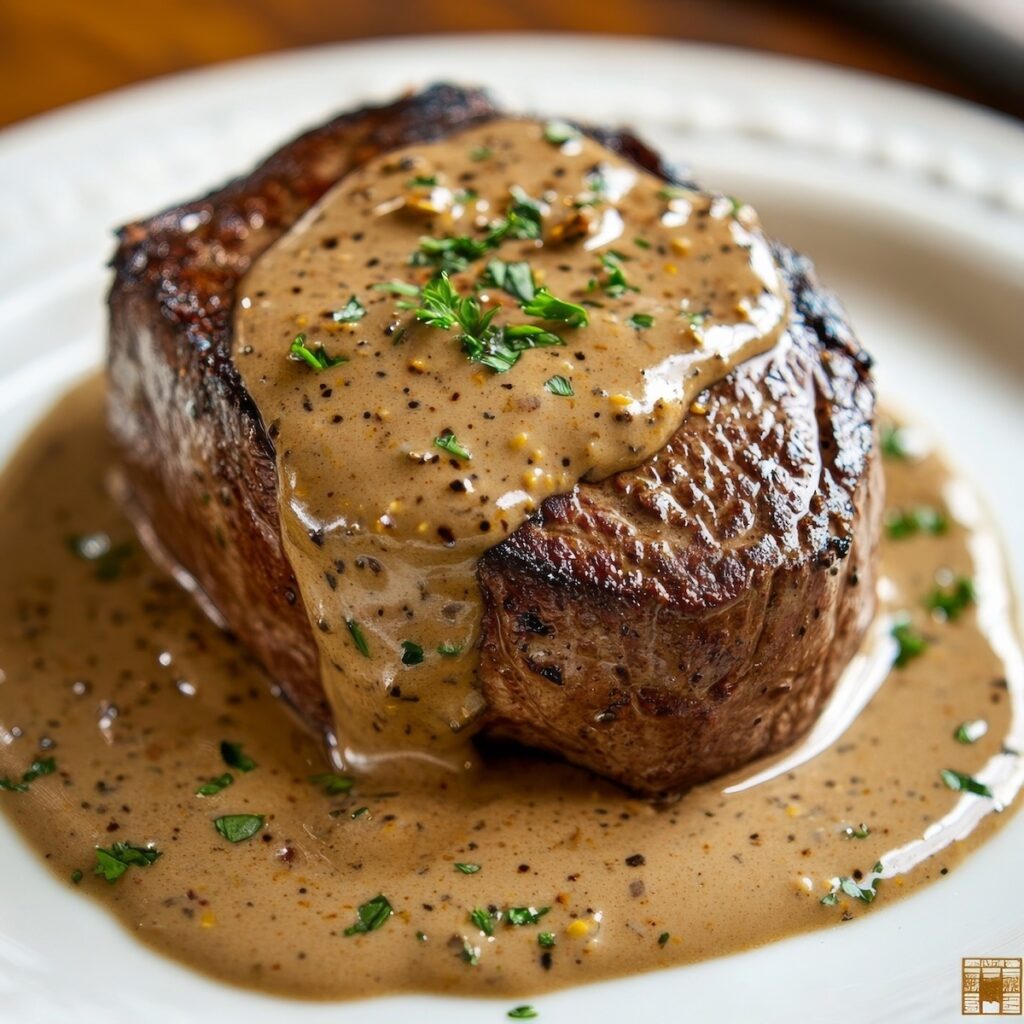
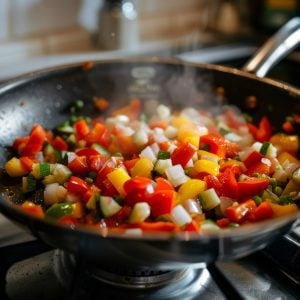
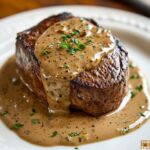
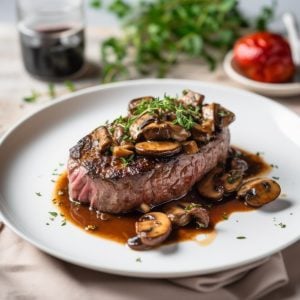
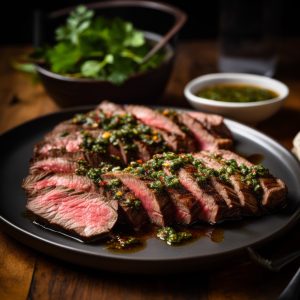
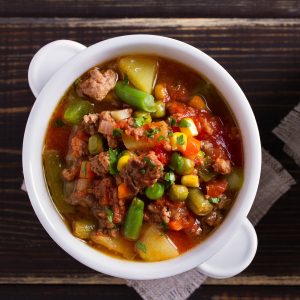
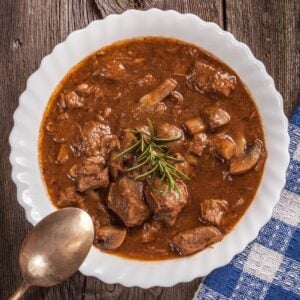
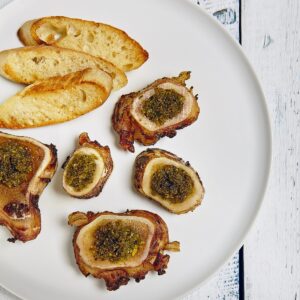
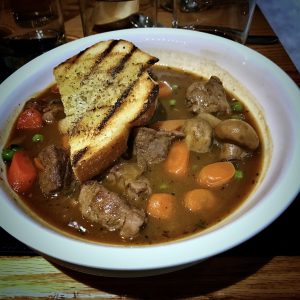
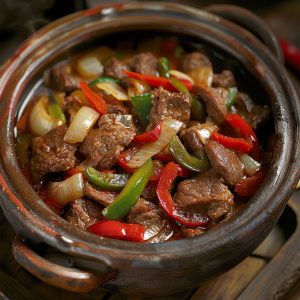
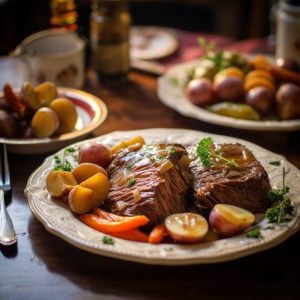


2 Responses
Which variety of Madeira wine are you recommending? Malvaisia-Sweet, Bual-Less Sweet, Verdelho-Semi Dry or Sercial-Dry?
Hey Gene, great question. If you do a search for dry versus sweet Madeira wine for cooking and making sauces, you are going to find equal arguments for each. I really think it has to do with the recipe and your personal tastes. For the sauce with this Steak Diane recipe, I would tend to go dry but that’s just my personal opinion.